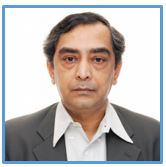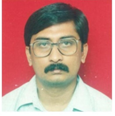ABOUT THE COURSE :
The complexity of software systems is ever on the rise – more complex problem domains being attempted (complex embedded systems), ever growing number of developers engaged in increasingly intricate development processes to turnaround in shorter and shorter time, flexibility of software and models of implementation being stretched to the limit with XaaS, platforms getting challenging with widely expanding distribution, cloud computation etc. Hence the analysis and design of software require well-organized and structured approaches to manage the challenges of complexity – even more than ever before.
Over the past two decades, methods of Object-Oriented Analysis, Design and Programming have proved to be effective solutions in handling the inherent complexity of software design, development, testing and maintenance. Concepts of OOAD like Abstraction, Encapsulation, Modularity, Hierarchy, Object, State, Behavior, Identity, Class, Operation, Interface, Inheritance, Association, Aggregation, Decomposition, Use-case, etc. have become the lingua franca for the software developers; ubiquitous notation of UML (Unified Modeling Language) has firmly established itself as the vehicular language for design; and many object-based as well as object-oriented languages have become available and have been widely adopted (based on TIOBE Index for May 2019) – Java (16%), C++ (8%), Python (8%), VB / VB.NET (5.5%), C# (4%), Perl (1.5%), Ruby (1.5%), Objective-C (1.5%), Delphi/Object Pascal (1.5%), D (1%) – to name a few. Even out of C (14%) developers, a large section today adheres to OOAD / OOP principles in design and disciplined modular implementation.
The present course introduces OOAD grounds up – starting with breaking down the root causes of inherent software complexity. After an in-depth exposure to Object Models, Classes and their interactions, the course takes a thorough tour of the diagrams of UML 2.0. Several systems examples help students understand the concept and tutorials offer quick practice. The course ends with a brief discourse on OOP in C++.
While this course can be followed independently (with some programming background), it would help in practicing OOP in C++ or Java. Hence this course is advised in conjunction with a course on C++ / Java.
INTENDED AUDIENCE : UG, PG Course, BCA, MCA, B.Tech., M.Tech.
PRE-REQUISITES :
1. Basic Knowledge of Programming & Data Structure
2. Experience of Programming Projects would help; but is not mandatory
3. Attending a course on C++ with this course will help
INDUSTRY SUPPORT : Object-Oriented Analysis and Design is at the core of software development processes. Hence all software development companies have a need for the same. These include – Microsoft, Samsung, Xerox, Yahoo, Google, IBM, TCS, Infosys, Amazon, Flipkart, etc.



DOWNLOAD APP
FOLLOW US